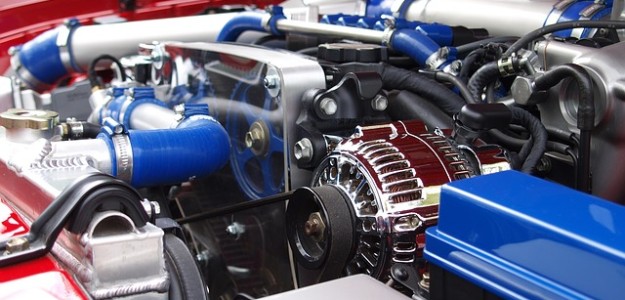
No doubt there's been a few times you've looked under the hood of your car to discover all the road grime and collected grease. While it's easier to close the hood and pretend you never saw the mess to begin with, others may want to make the engine bay as clean as possible, whether it's for personal reasons or they want to make it more appealing to potential buyers.
So what do you do? The engine bay is a complicated mess of engineering and electrical components that would have most consumers running away with their tails tucked between their legs. But cleaning the engine bay doesn't have to be complicated or even scary. In fact, you don't even need that much time or tools to begin this seemingly scary project.
Let's get started!
Supplies You'll Need:
A degreaser. Doesn't have to be a specialized engine degreaser. In fact, you can stop by your local Walmart and pick up the ever popular "Purple Power" sold in commercial sized jugs. No, it won't cost you a fortune either. A $10 bill will suffice!
A scrub brush or wheel brush, something with tough synthetic brushes. You're going to want to agitate the degreaser to help it do its job.
A power washer like that at the self-car washes. Don't clam up, I'll walk you through with how to use it, so you don't have to worry about damaging important electrical parts.
Some time to do a good thorough job. Dedicate about a half an hour to the project. It shouldn't take that long, but you'll be pleased with the result if you take your time.
Now that you have your supplies and are ready to begin, it's time to get the show on the road. Here are a few tips before getting started:
Make sure the engine isn't hot when you do this. Heat and water don't mix. The engine can be warm, in fact, some auto detailers will start the engine for 1-2 minutes before starting with this project. The heat helps loosen up the grime.
If you still don't feel comfortable using a pressure washer near your expensive engine, then you probably shouldn't be doing this project. Hire a pro to detail your engine for you.
You can use polishes on the black plastic parts, but I never personally do. If you do decide to use a polish, make sure it's safe to use in the engine bay and follow the directions carefully!
Now that we have the pointers out of the way, lets begin.
You're in the car cleaning bay at your local self-wash, or you're one of the lucky few to own your pressure washer. You've also made sure that your vehicle is warm or cooled enough to proceed. Now, before you start, its important to cover any electrical parts with a plastic bag. Pay special attention to the air intake filters and battery covers. Don't worry, we'll cover how to handle these components later.
The process is a simple one. You'll complete the entire washing and detailing of the engine bay in a two-step process. Spray the engine with the pressure washer and make sure you don't concentrate the stream in one particular area for too long! I told you I'd tell you how to avoid damage to those sensitive and expensive auto parts, follow this advice and you won't have anything to worry about.
Once you've sprayed the engine bay with water, you'll take your degreaser and spray it on the engine and other areas that need to be cleaned (avoid spraying the degreaser onto any painted surfaces). Allow the degreaser and water to sit for a few minutes, and agitate the suds with a wheel or bristle brush. This will help loosen the grime and grease while allowing the degreaser to do its job.
After scrubbing liberally, it's time to rinse everything off with clean water. Repeat the process if needed. Remember, avoid concentrating the water jet in one particular area for too long. You're aiming for quick sweeping actions. Repeat this process as much as necessary until all the suds have been washed away.
Now, you can either allow the engine bay to drip dry, or you can use a chamois. The chamois has the advantage of removing excess water quickly and efficiently. Make sure you only use this chamois for the engine bay, and not other parts of the car. In fact, dedicate a chamois to the exterior of the car and one specifically for the engine bay.
After you've removed the majority of the water (it's alright if things are still a little damp), you can remove the plastic bags and pay more attention to those more water sensitive parts. You may wipe these parts with a damp cloth, but make sure its not soaking wet.
If you keep up on the upkeep of your engine bay, you'll find yourself spending less time under the hood, and more time behind the wheel of your vehicle!
Book An Appointment